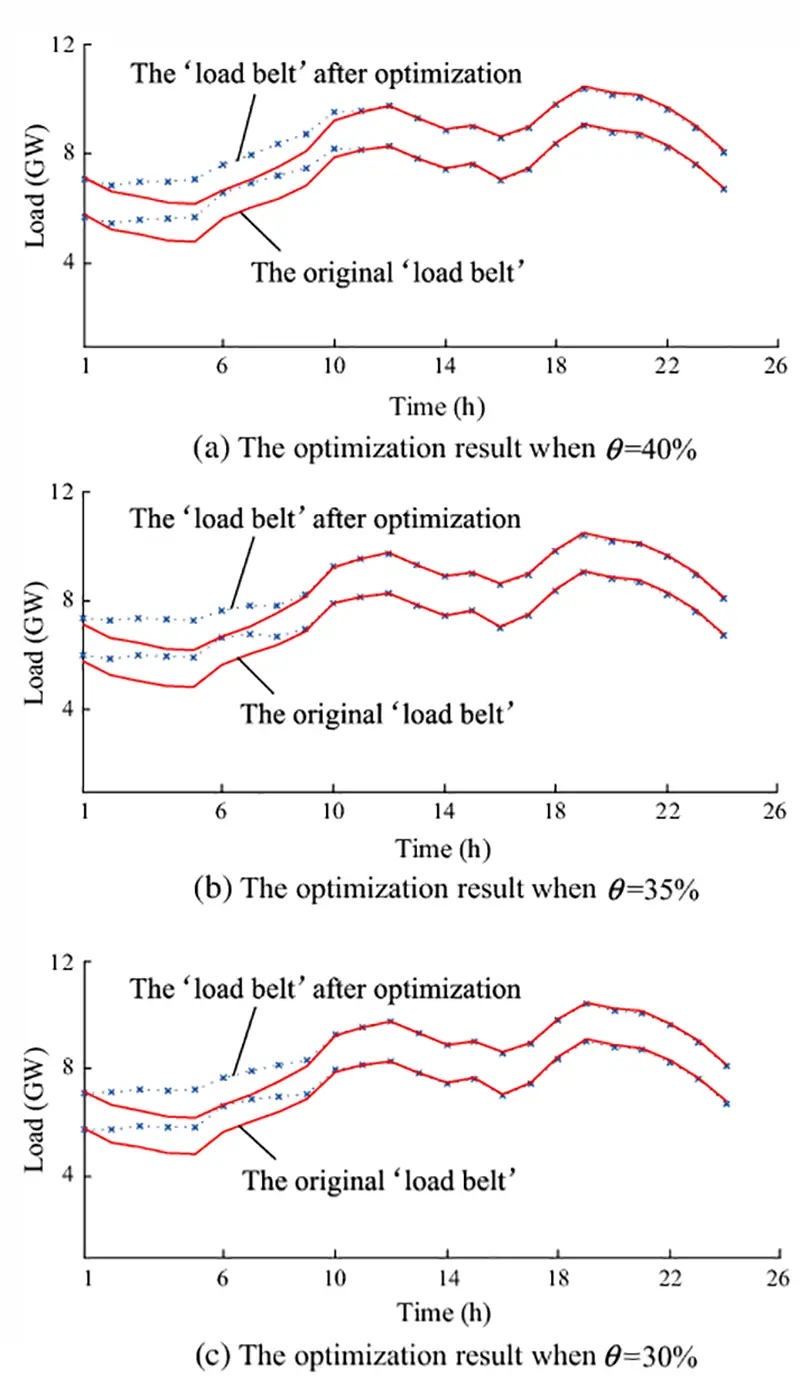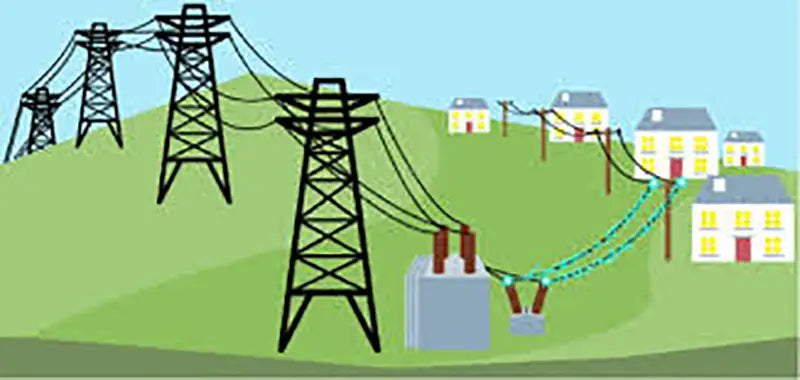
Main content:
- Peak shaving characteristics of Qinghai regional power grid
- Peak shaving characteristics of Qinghai Regional Power Grid
- Analysis of Load Characteristics of Qinghai Regional Power Grid
- Influence of photovoltaic power station output on load peak-to-valley difference
- Influence of Qinghai Sea Regional Power Grid’s Peak Shaving Capacity on Photovoltaic Acceptance Capacity
Photovoltaic power generation has the characteristics of randomness, intermittence and periodicity. At present, it is impossible to accurately predict, and photovoltaic power generation cannot participate in the power balance and enter the power generation plan arrangement. The acceptance of photovoltaic power generation can only be carried out in accordance with the requirements of the "Renewable Energy Law". After the regional power grid is connected to the grid, the grid company will purchase it in full. Photovoltaic power generation only generates electricity during the day, and the irradiance at night is zero, and the output is also zero; After the solar radiation is out, the solar radiation gradually increases and reaches its peak at noon. The output of the photovoltaic power station also increases as the radiation increases, and the output reaches the maximum at noon. Power generation and power supply; when the clouds drift over, the output of the photovoltaic power station drops rapidly, and the output of other power sources in the regional power grid must increase accordingly to supplement the power shortage caused by the reduction of photovoltaic power generation. This natural feature determines that other conventional power sources must provide compensation and adjustment for its active output when the photovoltaic power generation well network is running, so as to ensure continuous, reliable and safe power supply to the power load. This compensation adjustment to the active output of photovoltaic power generation can be regarded as the tracking of negative load fluctuations and the "peak shaving" of photovoltaic power generation. The adjustable capacity of photovoltaic power generation preparation is one of the assessment conditions for the acceptance of photovoltaic power generation capacity by the regional grid. The existence of photovoltaic power generation is equivalent to adding a set of negative "uncertain loads" to the regional grid. The fluctuation of photovoltaic power generation is completely random according to the weather conditions, which is much faster than the normal load change of the regional power grid. According to the actual measurement results, the drift of clouds can quickly reduce the output of photovoltaic power plants by 70%. Therefore, the adjustable capacity prepared for photovoltaic power generation cannot be completed by temporary startup and shutdown, but is in a rotating standby state. The larger the installed capacity of photovoltaic power generation, the larger the rotating reserve capacity prepared for this.
Taking Qinghai Province as an example, the photovoltaic power stations planned and constructed in Qinghai Province are all located in the Haixi area of Qinghai Province. However, the power load of the Hercynian regional power grid is small, and the conventional power supply is small. 460.75MW. In 2010, the maximum load of Hercynian regional power grid reached 880MW, and the total installed capacity of conventional power was 544.4MW. In 2015, it can reach the maximum load of 2734MW. The total installed capacity of conventional power supply is 2215.8MW. On the whole, the photovoltaic acceptance capacity of the Haixi region of Qinghai Province is very limited, and the entire grid of Qinghai Province needs to provide photovoltaic acceptance market and peak shaving capacity. In 2010, the double-circuit 750kV line between the Haixi region and the main grid of Qinghai Province has been built. The thermal stability of the outgoing channel is not a factor limiting the photovoltaic acceptance capacity of the grid in Haixi. Therefore, the photovoltaic acceptance capacity is calculated based on the entire grid in Qinghai Province.
1. Peak shaving characteristics of Qinghai regional power grid

According to the "Twelfth Five-Year" Regional Power Grid Planning and Design of Qinghai Regional Power Grid, the power sources of Qinghai Regional Power Grid are mainly hydropower and thermal power, of which hydropower accounts for a relatively large proportion. It will reach 67.3% of hydropower installed capacity and 32.7% of thermal power installed capacity. Although the hydropower unit has a wide range of adjustment capabilities, the connection of photovoltaic power generation as a negative load will increase the equivalent peak-to-valley difference of the system. Difficult to obtain.
1.1 Peak shaving characteristics of Qinghai Regional Power Grid
Qinghai Province is very rich in water resources. The units in Qinghai Regional Power Grid that do not participate in peak regulation include: self-provided power plants, whose output is relatively stable in order to meet the enterprise load, and generally do not participate in peak regulation; small hydropower and small hydropower units also do not participate in peak regulation due to economic reasons. peak.
1.2 Analysis of Load Characteristics of Qinghai Regional Power Grid
The proportion of electricity consumption in the secondary industry of Qinghai Sea Regional Power Grid has been maintained between 80% and 92.8%. The industrial production and operation conditions have a great impact on the load of Qinghai Province. At the end of 2008, due to the financial crisis, industrial electricity consumption decreased greatly, resulting in The winter load in 2008 showed a trough. However, the results of years of operation show that the annual maximum load of Qinghai Sea Regional Power Grid mostly occurs in November and December, the minimum load is mainly in May and June, and the annual average daily load rate is around 0.9. Mainly industrial load, the tertiary industry and urban and rural residents' domestic electricity consumption proportion is relatively small, determined by the characteristics of the load composition.
The large proportion of industrial load makes the daily load of the Qinghai Sea Regional Power Grid have no fixed regularity, and the double-peak feature is not obvious. The three peak loads are basically similar in size, and the difference is not obvious. The trough load is more common from midnight to 5:00 in the morning, but at the same time, there are times during the day when the load is very low or even lower than the load in the early morning. In 2008, more than 90% of the maximum and minimum loads of Qinghaihai Regional Power Grid appeared between 23:00 and 5:00, while 90% of the peak loads were distributed in two periods, one at 12:00~13:00 and the other at 18:00. : Between 00 and 22:00.

According to the "Twelfth Five-Year" Regional Power Grid Planning and Design of Qinghai Regional Power Grid, in 2008, the actual maximum output of Qinghai Regional Power Grid was 4110MW. Due to the growth of industry and the improvement of residents' living standards, the load of Qinghai Regional Power Grid increased rapidly. The actual load measurement of the regional power grid in the Qinghai Sea area and the load forecast of the regional power grid in the Qinghai Sea area in 2015 are shown in the figure below. The power consumption of high-energy industries such as electrolytic aluminum, ferroalloy, and silicon carbide in the regional power grid accounts for more than 80% of the whole society. The construction progress of the power project has a great influence, so the relative value should be used as much as possible in the analysis conclusion.

1.3 Influence of photovoltaic power station output on load peak-to-valley difference
Since the output of photovoltaic power generation is completely determined by weather conditions, with randomness, intermittency and obvious periodicity, the output of photovoltaic power plants is usually regarded as a negative load in the study of photovoltaic access to the grid. If the photovoltaic power generation can be predicted, the scheduling curve of other power sources can be arranged according to the superimposed load of the two. Therefore, it is necessary to analyze the characteristics of the equivalent load of the system after the photovoltaic power station is connected to study the peak regulation of the regional power grid. question. The connection of photovoltaic power generation may make the peak-to-valley difference of the equivalent load larger, or it may become smaller. ; Moreover, the larger the installed photovoltaic capacity, the greater the impact. After the peak-to-valley difference becomes larger, the load changes in a wide range, and the peak regulation of the system becomes difficult.

2. Influence of Qinghai Sea Regional Power Grid’s Peak Shaving Capacity on Photovoltaic Acceptance Capacity
The limited peak shaving capacity of the power system is the most important factor restricting the photovoltaic acceptance capacity of Qinghai Province, which is jointly determined by two key links
2.1 Peak and valley characteristics of load
The load of the power system fluctuates randomly, but for a large power system, the change of the load has certain rules to follow. Every day there is a maximum and minimum load, that is, the peak load and the valley load, and the peak and valley of the load. The greater the difference, the greater the impact on the power system. At present, the load forecasting of the power system has been relatively mature after years of development, and the forecasting accuracy is relatively high. The error is generally within 5%, so that the power system can arrange the operation mode of the conventional power plant in advance and ensure the operation safety of the regional power grid, that is, Say, current load is a predictable but uncontrollable variable
2.2 Adjustment capacity of power plants
The power generation and consumption of the power system must be synchronized to ensure the stability of the power system. However, the current control of load changes can only adapt to the load changes by adjusting the output of the power plant at any time. When the load increases, the output of the power plant must be increased at the same time to meet the load requirements; when the load is reduced, the output of the power plant must be reduced at the same time to maintain the balance of power generation and supply. . But the power plant also has an allowable output adjustment range, the upper limit cannot exceed the rated output, and the lower limit cannot be lower than the safe operation limit of the power plant. The safety lower limit of thermal power plants in Qinghai Province is generally 60%~70%. If the output drops again, the thermal power plant will be forced to shut down. It takes at least one day to start and stop the thermal power plant, and the cost of starting and stopping once will often cost dozens of dollars. Therefore, it is generally necessary to avoid the start-stop adjustment of thermal power plants as much as possible. The hydropower plant has strong adjustment ability, low safety limit, and the speed of start-stop adjustment is very fast, and no additional cost is required. However, the downstream water volume must be guaranteed. Many hydropower plants in Qinghai adopt the method of determining electricity by water. The ability to generate electricity and regulate is also limited.
The regulation ability of conventional power plants in the power system and the characteristics of the load are the decisive factors in determining the photovoltaic installation capacity of the entire system. If the installation of photovoltaic power generation exceeds the capacity of the regional power grid, it will cause the thermal power plant to start and stop peak regulation, and the hydropower plant will abandon water, which will reduce the benefits of conventional power plants?

2.3 Conclusion
Taking the above factors into consideration, through simulation analysis, it is shown that: in 2015, the maximum photovoltaic receiving capacity of Qinghai regional power grid is 1000MW, and all planning have uncertain factors.
①Power supply: Conventional power plants play a role in ensuring the supply of electric energy and power balance in the power system. If the construction of the power supply fails to meet the planning goals, especially the hydropower with strong adjustment ability, the adjustment ability of the power system will not reach the planning goals. If it is reduced, the ability of the system to accept variable photovoltaic power generation will also be affected.
②In terms of load: The load is the final user of electric energy, and the electric energy generated by the power system needs to be accepted by the load. If the load does not meet the planning and prediction, the electric energy generated by the conventional power plant will not have enough market acceptance, that is, "oversupply" will also affect the The photovoltaic capacity of the power system.
③ regional power grid: The regional power grid is the link between the power source and the load, and it plays the role of a bridge to transmit the electric energy from the power source to the user. If the regional power grid construction plan is adjusted, the photovoltaic power station may face the problem of "stuck neck" that cannot be delivered. For example, if the construction of the 750kV grid in the Haixi area is delayed, the 1000,000-kilowatt photovoltaic power station in the Haixi area will not be able to be delivered. The problem.
In addition, the adjustment of photovoltaic power generation's own planning, technological progress, etc., will have an impact on the acceptance capacity.
Read more: Output Characteristics of Photovoltaic Power Plants and Their Correlation Analysis with Loads















